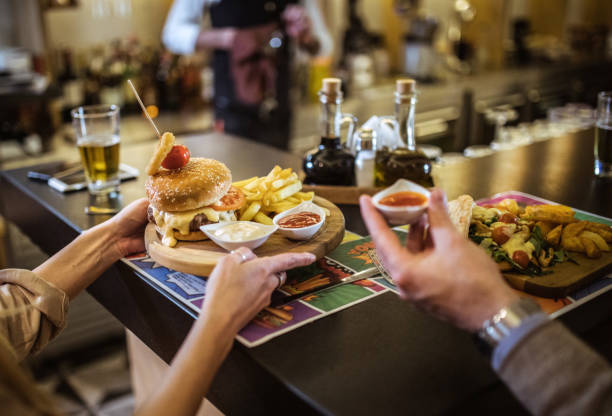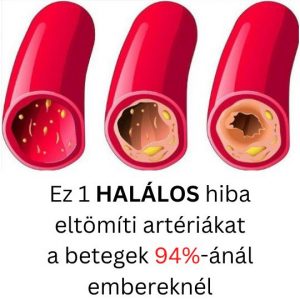The #1 Rated Blood Sugar Formula
4 Hidden Habits That May Affect Your Blood Pressure

Common factors that can lead to high blood pressure include:
- A diet high in salt, fat, and/or cholesterol.
- Chronic conditions such as kidney and hormone problems, diabetes, and high cholesterol.
- Family history, especially if your parents or other close relatives have high blood pressure.
- Lack of physical activity.
High blood pressure usually develops over time. It can happen because of unhealthy lifestyle choices, such as not getting enough regular physical activity. Certain health conditions, such as diabetes and having obesity, can also increase the risk for developing high blood pressure.
OTC drugs
People who use over-the-counter medications to treat minor aches and pains can see spikes in their blood pressure. OTC medications, including anti-inflammatory drugs such as naproxen (Aleve) and ibuprofen (Advil), can increase blood pressure. Drugs such as acetaminophen (Tylenol) are less likely to cause increases in blood pressure. Many OTC decongestant medications are also known to raise blood pressure. Prescription medications such as those used to treat mental health, oral birth control medications, immunosuppressants, cancer medications, and steroids can also raise your blood pressure. However, medical experts recommend that people don’t stop taking these medications without consulting their prescribing physician.
Both alcohol and caffeine can also contribute to rising blood pressure.
It’s recommended that limiting caffeine to less than 300 milligrams (mg), or about two to three cups of coffee per day, can help avoid high blood pressure from reaching critical levels.
Alcohol should be limited to “no more than one drink per day for women and no more than two drinks per day for men,” Dr. Elizabeth A. Jackson, MPH, professor of medicine in the Department of Cardiovascular Disease at the University of Alabama, told Healthline.
“Green tea extract and other caffeine-related products, such as matcha, all increase the adrenalin surge in a patient,” said Dr. Satjit Bhusri, attending cardiologist at Lenox Hill Hospital in New York City.
Bhusri went on to state that these products are “meant to make one more alert, but in doing so, [they elevate] blood pressures into dangerous categories.”
Food ingredients and supplements
Supplements and certain food combinations can also lead to elevated blood pressures. Not all supplements that are labeled “natural” are considered to be safe. Herbal supplements and home remedies that use ingredients such as licorice can lead to hypertension, for example. Also, foods with strong cheeses, cured meats, and even soy products can contain high levels of tyramine. This substance can interact with antidepressants such as monoamine oxidase inhibitors (MAOIs), resulting in hypertensive episodes.Improper blood pressure readings
Some people experience “white coat hypertension,” which can occur when medical settings bring on anxiety, leading to high blood pressure readings. These measurements can incorrectly give the picture of hypertension in the doctor’s office, and that means people may end up on unnecessary blood pressure medications. To offset this, people can take their blood pressure readings at home, and then compare those readings to measurements at their doctor’s office. “If the blood pressure numbers are higher in a doctor’s office, taking a blood pressure at home provides [patients] and their healthcare provider with an accurate picture of what the blood pressure is in a natural environment,” said Jackson. To get as accurate a measurement as possible at home, take your blood pressure using a portable device that is well-calibrated and has good batteries. Prepare for blood pressure readings by emptying your bladder, avoiding cigarettes or caffeine for 30 minutes before the measurement, and sitting quietly for a few minutes before taking a reading.How to know you’re in trouble
As reported by the CDC, in 2014 more than 410,000 American deaths, or almost 1,100 deaths a day, involved high blood pressure as a primary or contributing cause. Under current guidelines, normal blood pressure is having a systolic (upper) number of less than 120 and a diastolic (lower) number of less than 80. Stage I hypertension occurs when the systolic number is between 130 to 139 and the diastolic is between 80 to 89. Stage II hypertension is a systolic greater than 140 and a diastolic greater than 90. Bhusri said that if you have a systolic blood pressure greater than 180 and a diastolic greater than 120 and you have “symptoms of chest pain, dizziness, or shortness of breath — this is a hypertensive emergency.” For anyone in this situation, his advice is to “go to the nearest emergency room, as their risk of stroke or heart attack is very high.”The risk of high blood pressure
High blood pressure is a contributing factor to multiple dangerous health conditions. According to the CDC:- Of those Americans who have a heart attack for the first time, 7 out of every 10 have high blood pressure.
- Almost 8 in every 10 Americans who have had a stroke for the first time also have high blood pressure.
- Chronic heart failure is associated with high blood pressure in about 7 in every 10 Americans.







